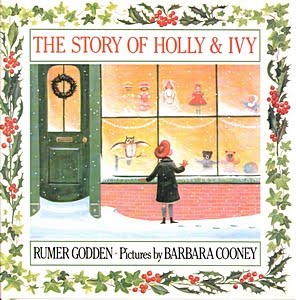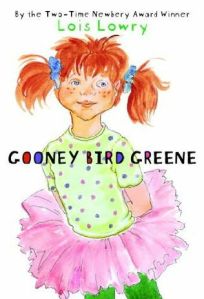 The Story of Holly and Ivy by Rumer Godden (illustrations by Barbara Cooney) is a wonderful book to kick off the holidays! But, is it good for a Mother/Daughter Book Group? Where the daughters are in second grade? Well, I think so, as all the girls enjoyed the story–and the pictures!–and we had a great conversation about it, with everybody, including the moms, joining in.
The Story of Holly and Ivy by Rumer Godden (illustrations by Barbara Cooney) is a wonderful book to kick off the holidays! But, is it good for a Mother/Daughter Book Group? Where the daughters are in second grade? Well, I think so, as all the girls enjoyed the story–and the pictures!–and we had a great conversation about it, with everybody, including the moms, joining in.
Importantly, it meets my three criteria:
The Story: This story captures the attention and the imagination of the girls because it is, as the narrator tells the reader right away, a story about wishing. A doll in a toy store is wishing for a little girl to come and take her away. (Even the setting makes the story interesting!) A little orphan girl is wishing to spend Christmas with her grandmother, even though everyone knows she doesn’t have a grandmother. And Mrs. Jones, the policeman’s wife, is wishing for a little girl of her own to share Christmas with. How these three characters go about getting their wishes makes for a charming and heart-warming tale.
Questions: This story generated many questions, but what I loved were some of the answers the girls had. For example, when asked why Abracadabra is so mean–why does he tell Holly no one will buy her and she will be put in a box–one little Bookclub Buddy responded that perhaps Abracadabra had been put in a box at one time. Hmmm, pretty astute, if you ask me. This reader, at this young age, already can see that there is a cycle in our treatment of each other–that many times we learn how to treat others through how we have been treated.
The girls explained wonderfully how wishes work, and we discovered that: sometimes wishes come true later than we would like, sometimes they don’t come true at all and we move on to other wishes, and sometimes we just have to never give up on our wishes–we have to keep on wishing!
We did a little critical thinking exercise and tried to put ourselves in the heads of our bedtime stuffies; we tried to see ourselves from their point of view. And I learned a critical thinking lesson myself, as I saw how much the illustrations in this story meant to the girls. It occurred to me that, as we get older and read books without illustrations, we may be losing our ability to gather meaning about a story from its pictures. The girls, however, are still expert at interpreting the artwork (in this case done by a Caldecott Winner); they think nothing of taking meaning about the story from the illustrations. I think this is terrific, and I will never breeze by the pictures in a book again–I’d like to thank my Bookclub Buddies for that!
Life Lessons: I think the big take-away (I hope, anyway) is that we should always have wishes–they really can’t hurt and they just may help us get what we want. But more important than wishing is doing something about it. We can wish, and we should wish, but we must act and go after what it is we are wishing for.
So, The Story of Holly and Ivy meets my criteria and I can thoroughly recommend it for a Mother/Daughter book Group. First, second, and third-graders will enjoy it.


